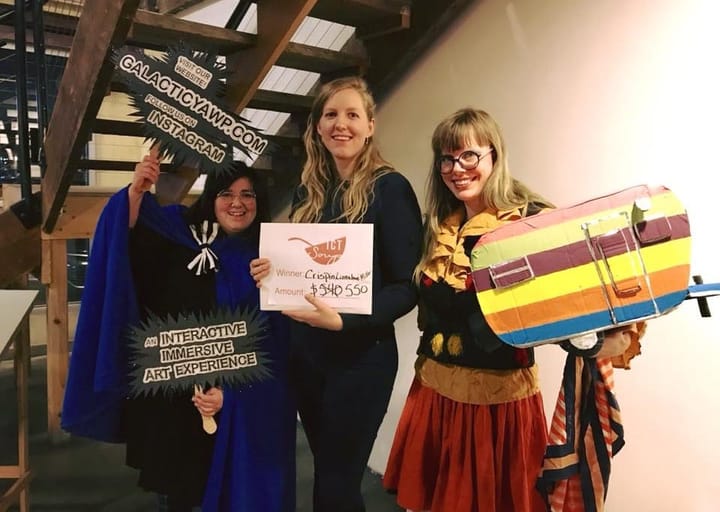Light-filled moments across the world: Stephen Miner at Larksfield Place
The senior living community's gallery is a showcase for 50 works in a variety of media. The exhibition is on view through October 22.
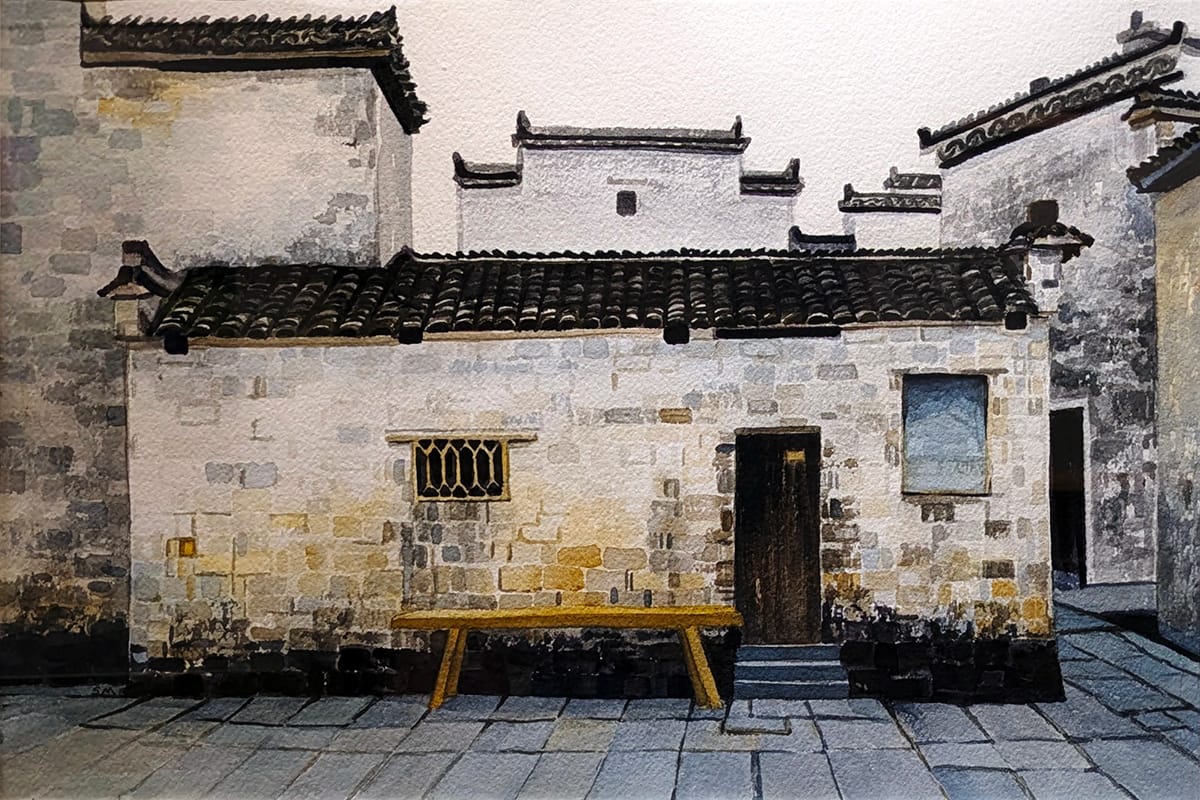
The ancient village of Hongcun in Anhui, China, is renowned for its traditional Hui-style architecture, characterized by white-washed walls, black tiled roofs, and carved wooden details on the windows and doorways. For Stephen Miner, an empty wooden bench in front of such a structure is the subject of his watercolor painting, “China Anhui Hongcun,” a seemingly uneventful moment, albeit an exotic one, captured in time and preserved. The very act of preserving it elevates the moment to a memorable one.
From now until October 23 at The Gallery at Larksfield Place, 7373 E. 29th St. N. in Wichita, you can view works by Stephen Miner, a Wichita artist who has a staggering 50 works of watercolor, oil, collage, and assemblages on exhibition. The collection captures seemingly uneventful moments, which altogether leaves one wondering what makes a moment worthy of remembering in the first place.
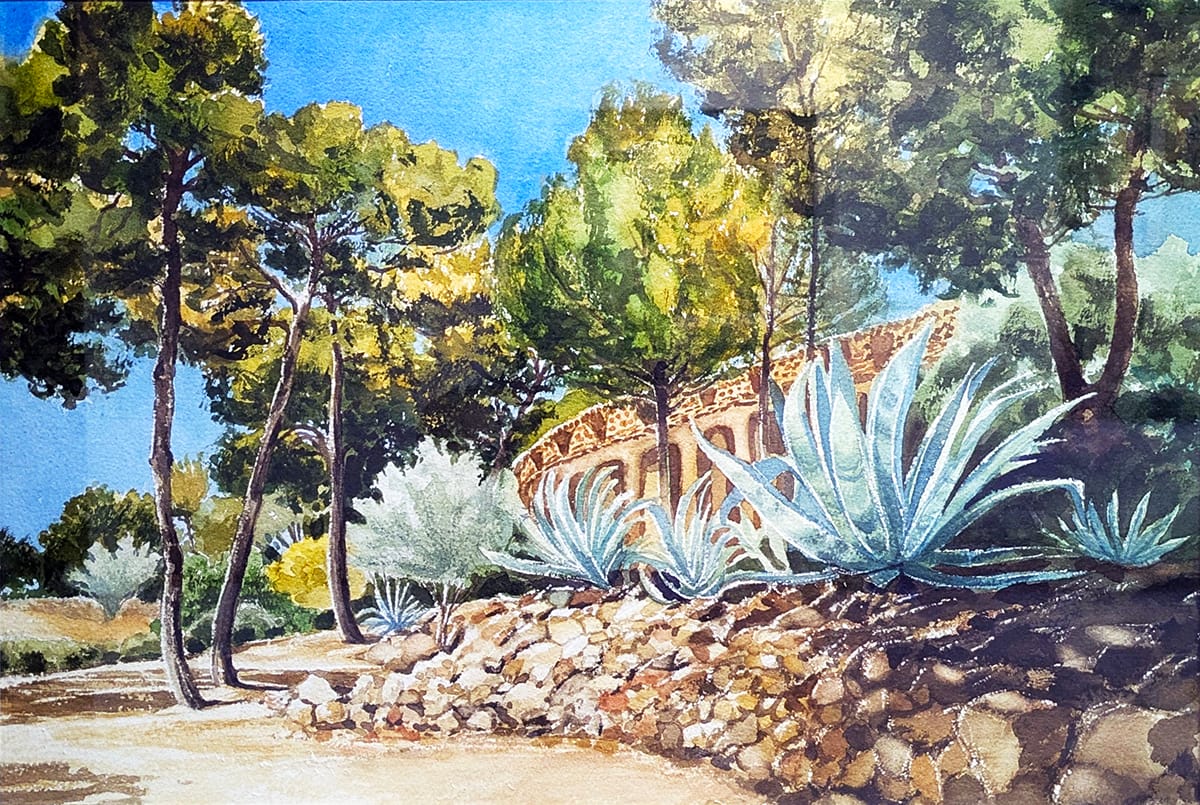
The Gallery at Larksfield Place in east Wichita is an art spot to pay attention to, hosting several group and solo exhibitions per year that are beautifully marketed and well attended. That's is exciting, because Larksfield Place isn’t a hot new shopping district or arts center, it is a premier retirement community. And its gallery isn’t a building or dedicated room, it is the length of a hallway and half of another hallway. Still, it is a high-foot-traffic zone that reflects the hubbub of the community. On the day I visited, Beauty and Barber Shop, the salon adjacent the gallery, was abuzz with clients and stylists discussing mushroom supplements and Shocker basketball.
Like a photographer often does, Miner chooses moments from the everyday world to capture and highlight. “I want to ‘still’ life, freezing a moment in time and elevating the mundane to a higher status,” he says in his artist statement. His still life invites you to imagine yourself within it, and how you would experience these occasions. A sun-drenched spot on a creek or a quiet alleyway becomes a place to linger and contemplate. A minor instant then becomes seared into memory and imprinted as a reflection of the often overlooked beauty that surrounds our daily lives.
Our free email newsletter is like having a friend who always knows what's happening
Get the scoop on Wichita’s arts & culture scene: events, news, artist opportunities, and more. Free, weekly & worth your while.
No spam. Unsubscribe anytime.
I especially loved Miner’s watercolor travelscapes. An overhead view of a chateau and its surrounding village in “Provence” invites the viewer to peek amongst the rooftops for a glimpse into a window, or to imagine oneself in a heavily landscaped courtyard. Similarly, a walkway past the agaves and stonework in “Park Guell Barcelona” inspires one to seek shade from the light of a cloudless sky. A watery canal, with meticulously painted brick walls and dark reflections of the surrounding buildings in “Canal in Venice,” makes one wonder what lies just beyond the arched bridge near the waterway’s vanishing point.
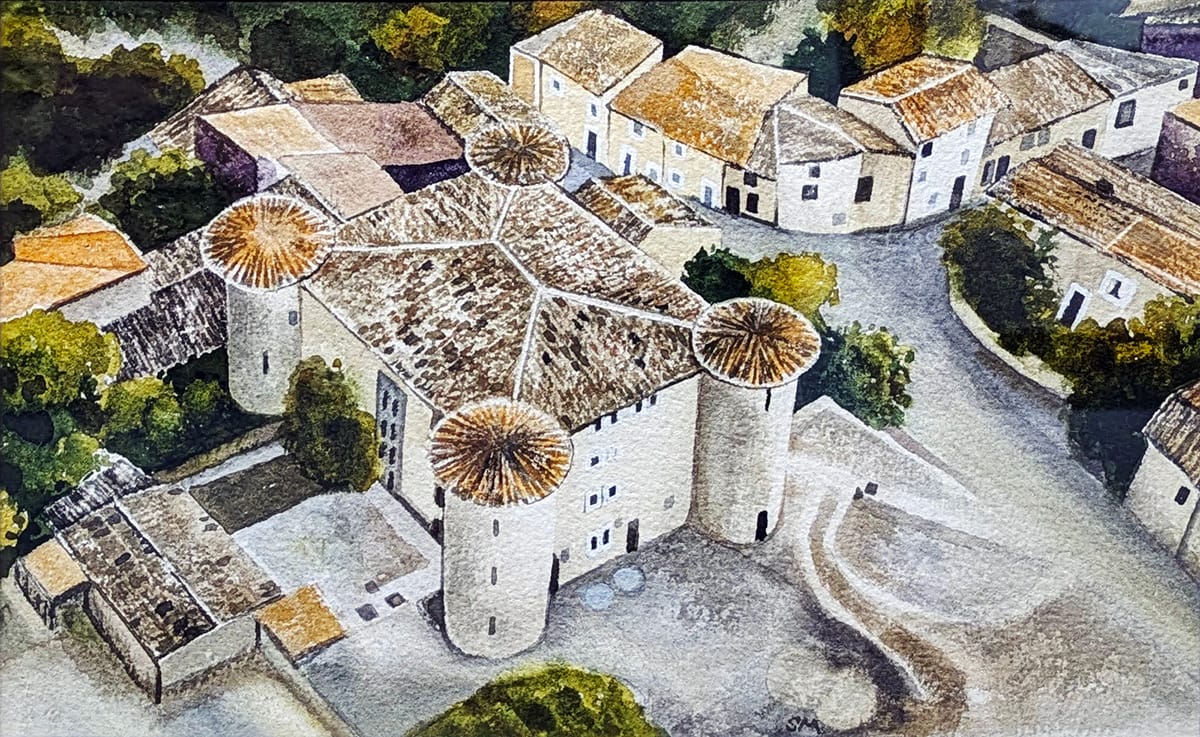
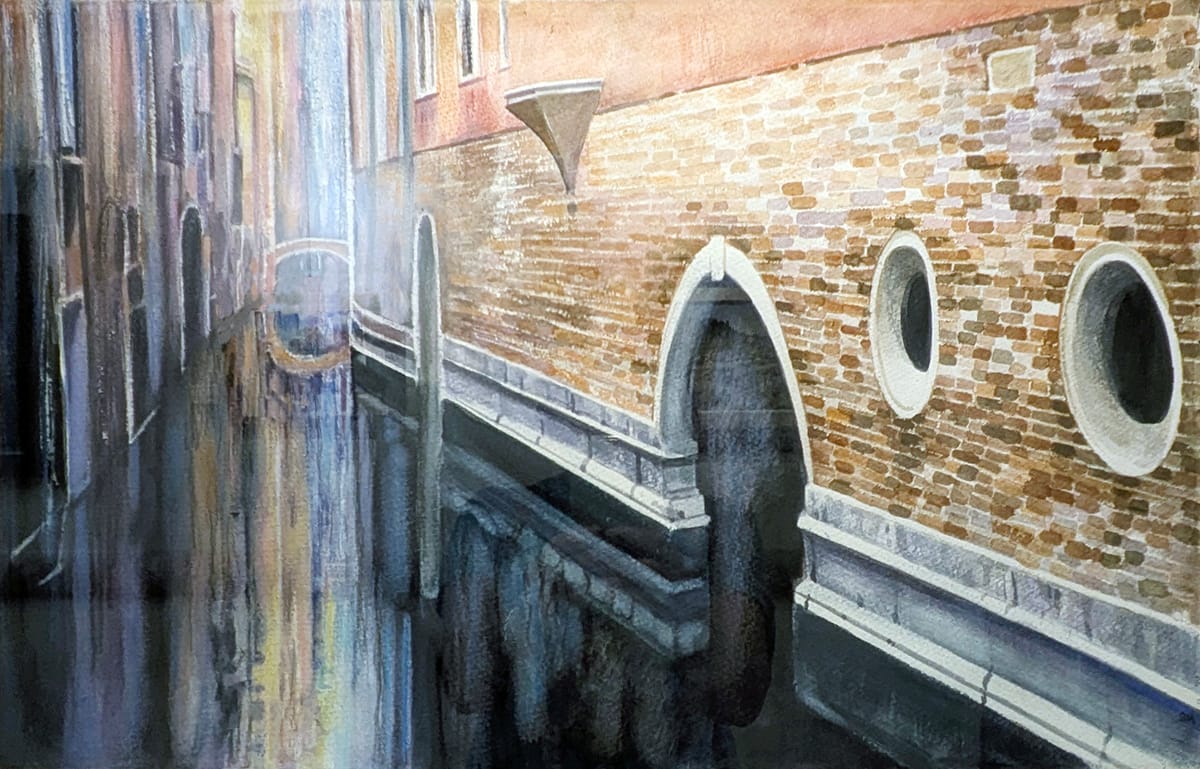
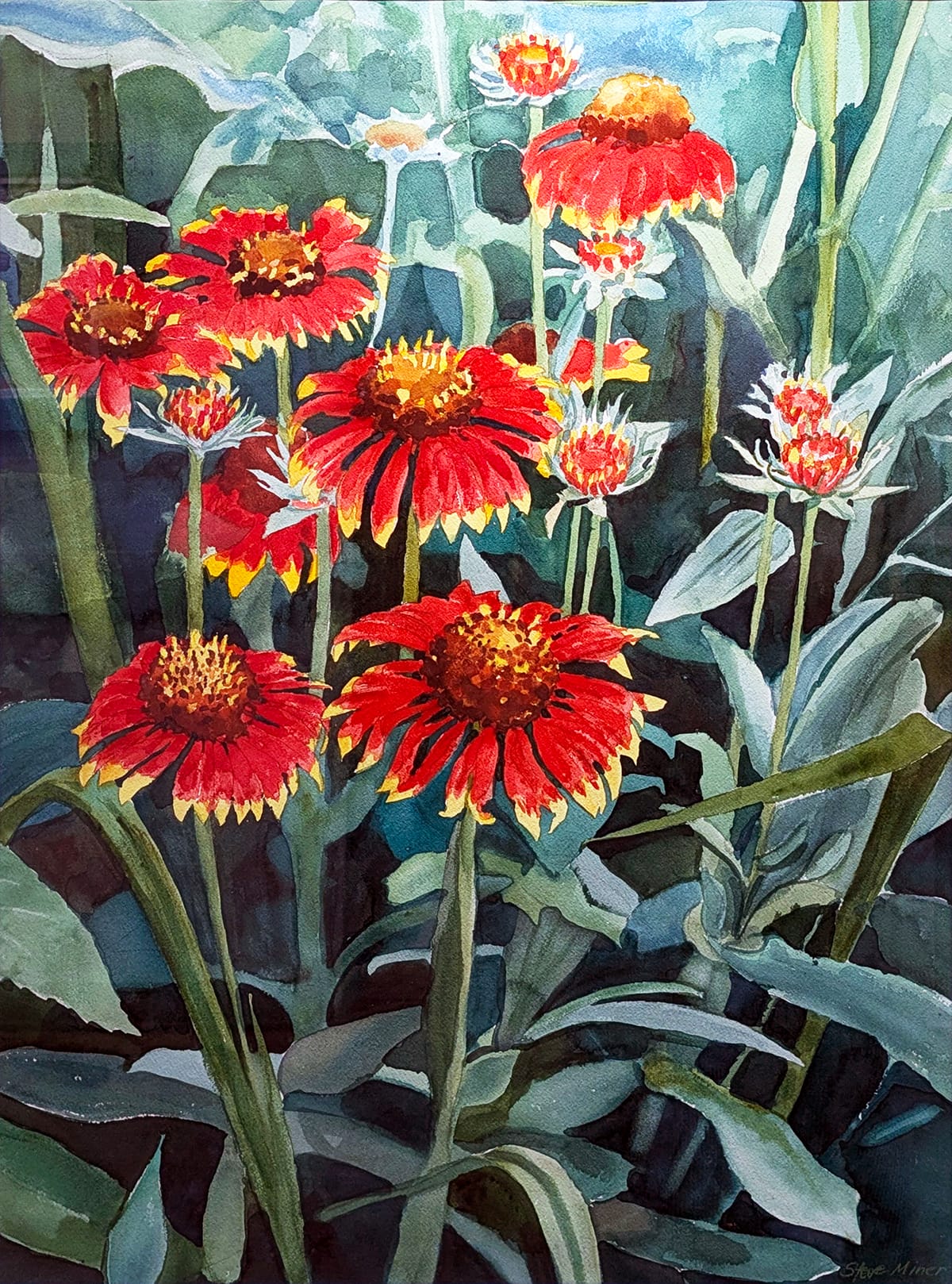
I was less enthused by his flower watercolors, which are studies in individual flower species — echinacea, lotus, gaillardia — and, while colorful and inviting, not as technically developed or moody as the travelscapes.
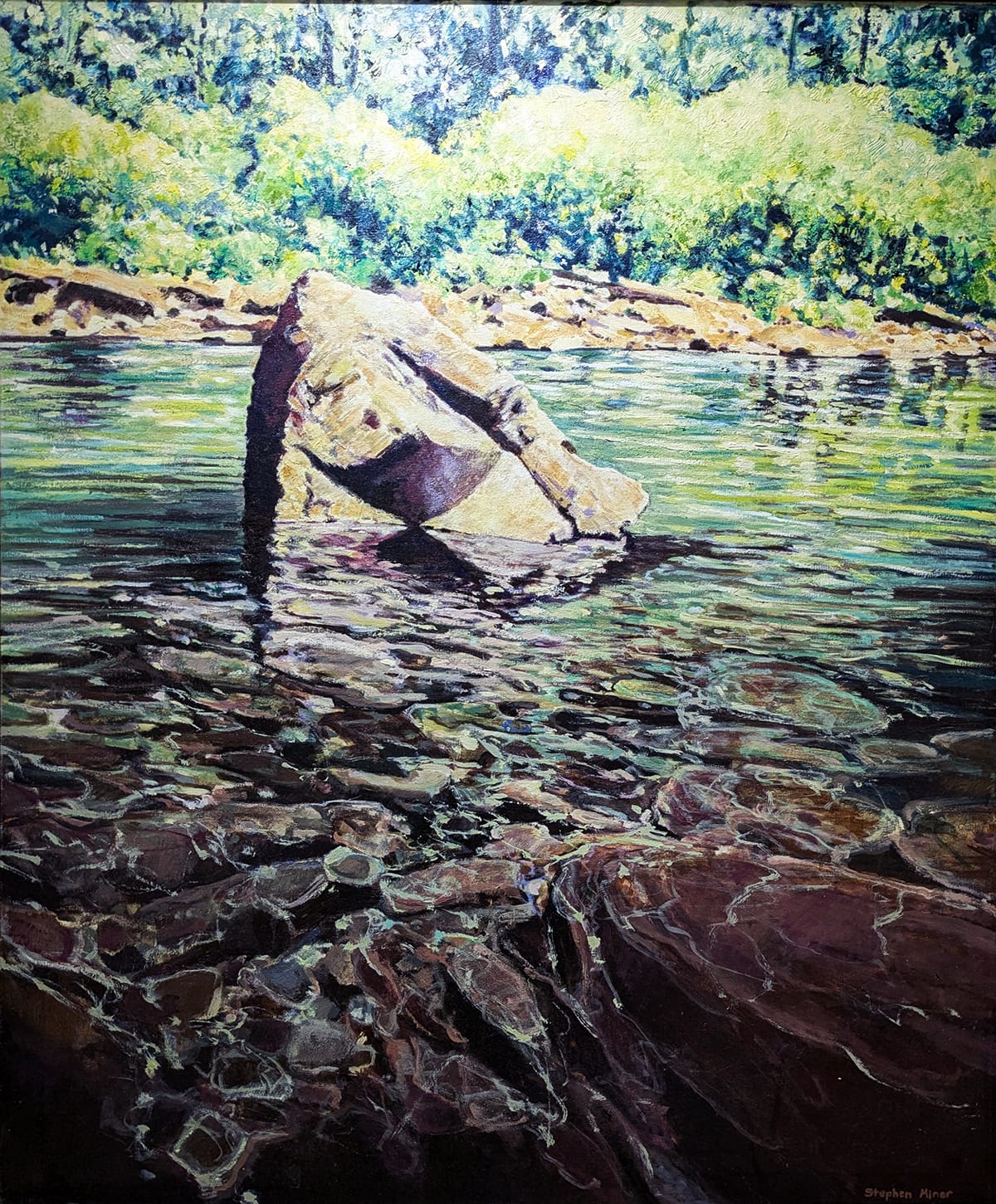
Miner’s oil paintings capture shadow and light through confident color application that implies movement and stillness all at once. The spectacular “Colorado Creek” prominently features a triangular boulder in the middle of a clear body of water, stones in the foreground of one shore, and sun-drenched shrubbery in the background of the other shore. White-lined rocks impart the gentle movement of the water surrounding them on the shallow shore.
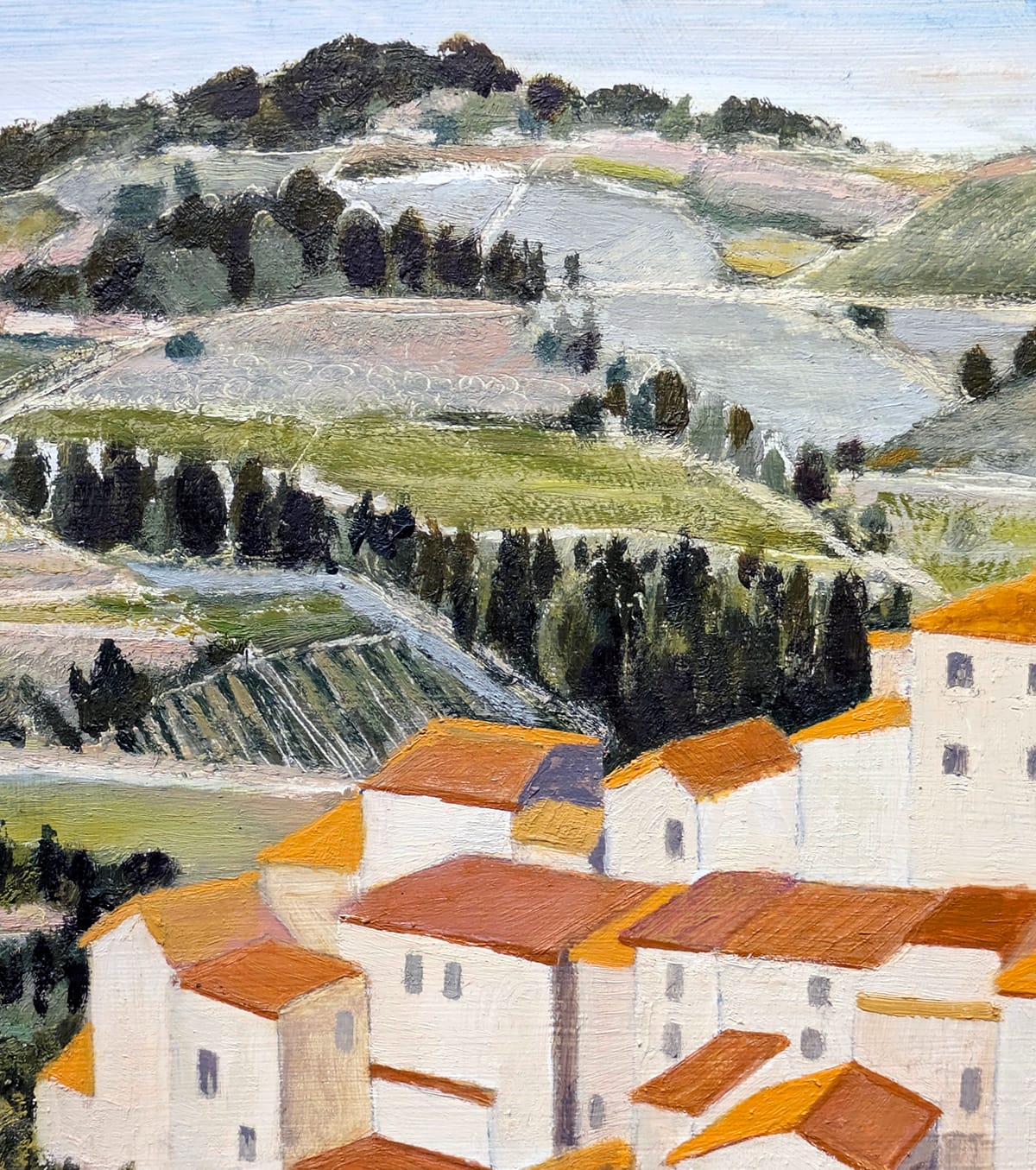
In “Fields of Provence,” mesmerizing, quilt-like patterns make up the fields surrounding a rural Provençal village and the eye further dives into diagonal and even circular lines Miner sgraffito scratched into the oil paint.
His assemblages, though not necessarily in cohesion with the paintings, also seem to capture the beauty of the mundane when arranged in like shapes and color.
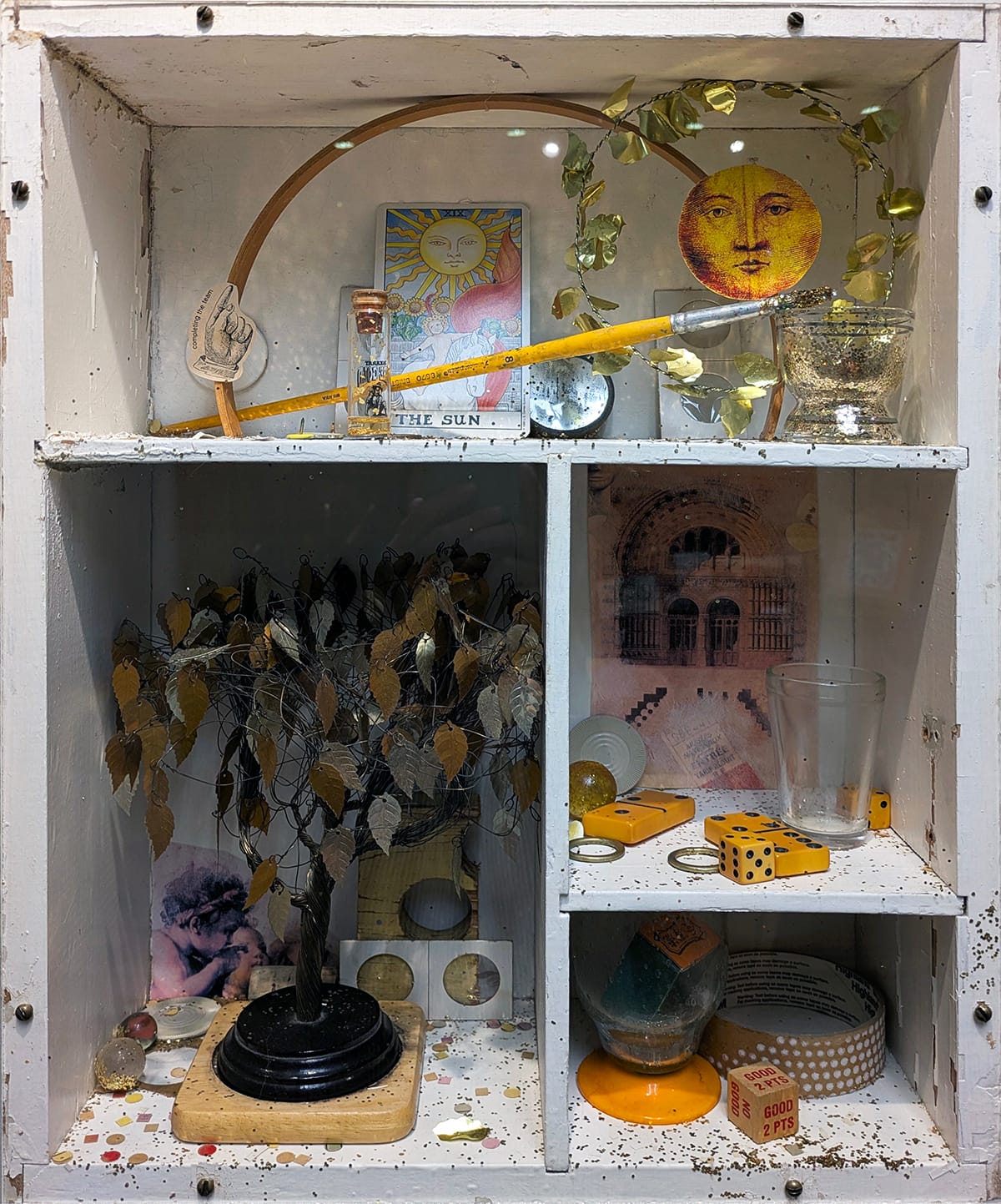
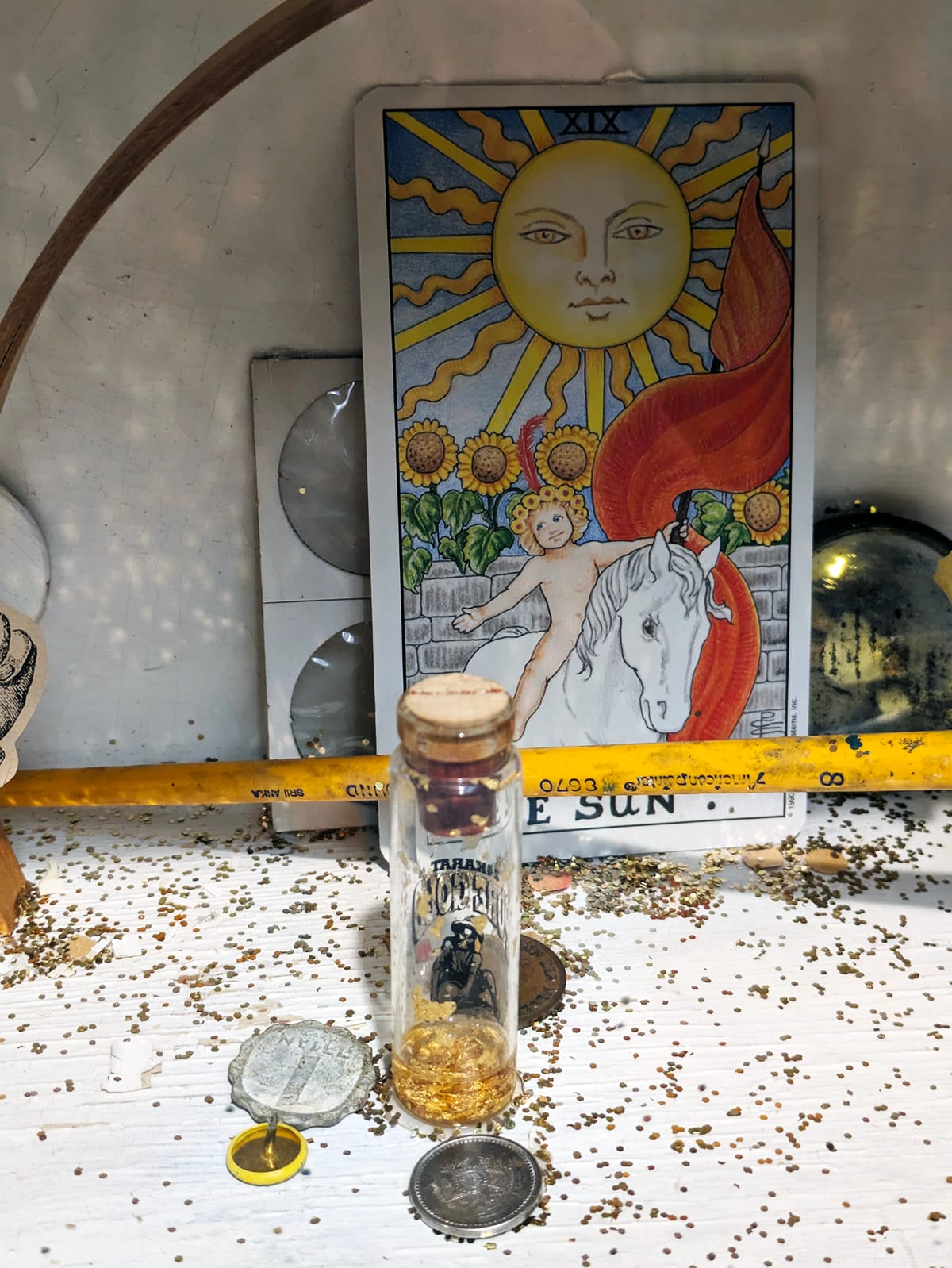
Stephen Miner, “Columbarium Solarium,” assemblage. Photo by Jessy Clonts Day for The SHOUT.
A columbarium, I learned, is a room or building with niches for funeral urns to be stored. Miner’s assemblage “Columbarium Solarium” then could be defined as a light-filled box for end-of-life objects. A gold wire-wrapped tree with golden leaves — perhaps a tree of life — occupies one niche, and golden dice and dominoes another. A tarot card picturing the sun — a card that can represent joy, success, and vitality — a cork-stopped bottle labeled as 24-karat gold flakes, a paintbrush dipped in gold glitter, and upright thumbtacks makes one wonder about what greets us at life’s end. Are we illuminated and enlightened, or is it best to simply enjoy the present while we are still here? Life’s simple moments, if you will.
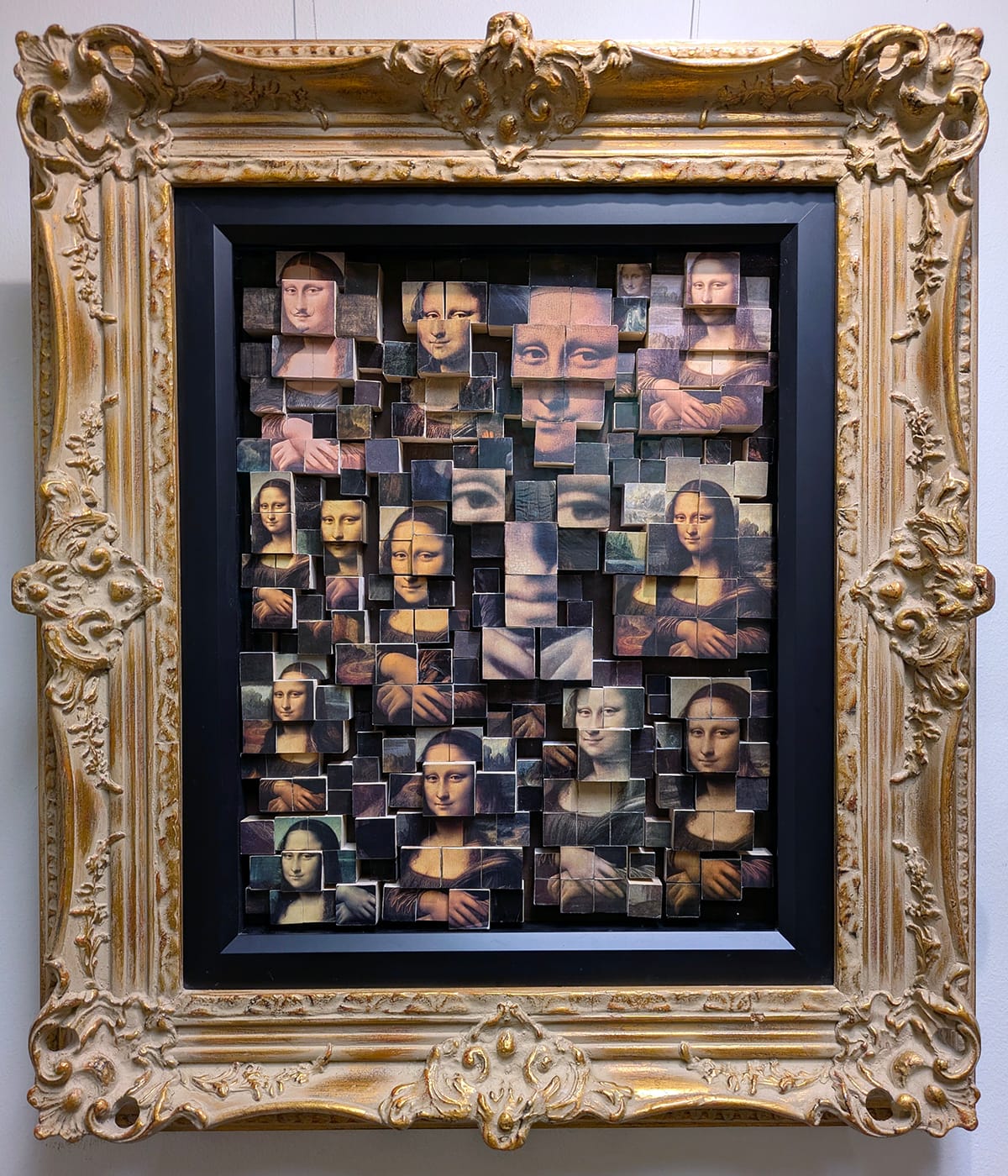
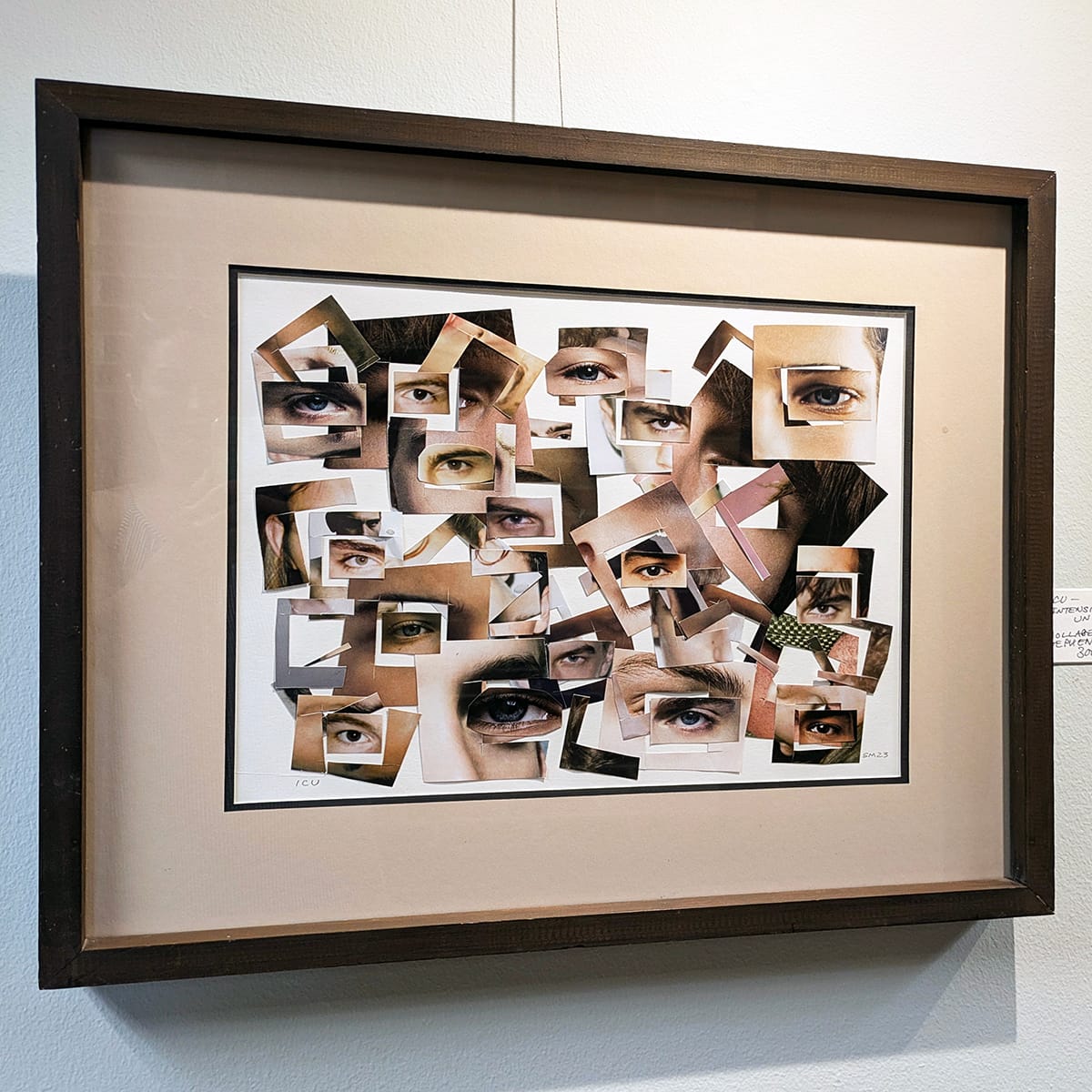
From Left: Stephen Miner, “Mona Deconstructed,” assemblage; Stephen Miner, “ICU - Intensive Care Unit,” collage. Photo by Jessy Clonts Day for The SHOUT.
I only wonder why, with the exception of an assemblage featuring repeating images of the Mona Lisa (“Mona Deconstructed”) and a collage of human eyes (“ICU - Intensive Care Unit”), there wasn’t a single human being or living creature— nary an alley cat or bumblebee — within Miner’s works. Were they created from the perspective of an observer, or from the perspective that the location or objects themselves exist independently of an observer and are not in need of one to be worthy of highlight? (If a tree falls in the forest ...?) Were these uninhabited compositions the worldview of someone who simply feels alone? Maybe they are a fantasy for one who wishes to be alone in an otherwise crowded world?
The sheer number and scope of media of the works lead me to believe that it must have taken years to create this body of artwork. It is an accomplished and polished collection that is a delight to ponder. Dozens of moments that make up years of observation.
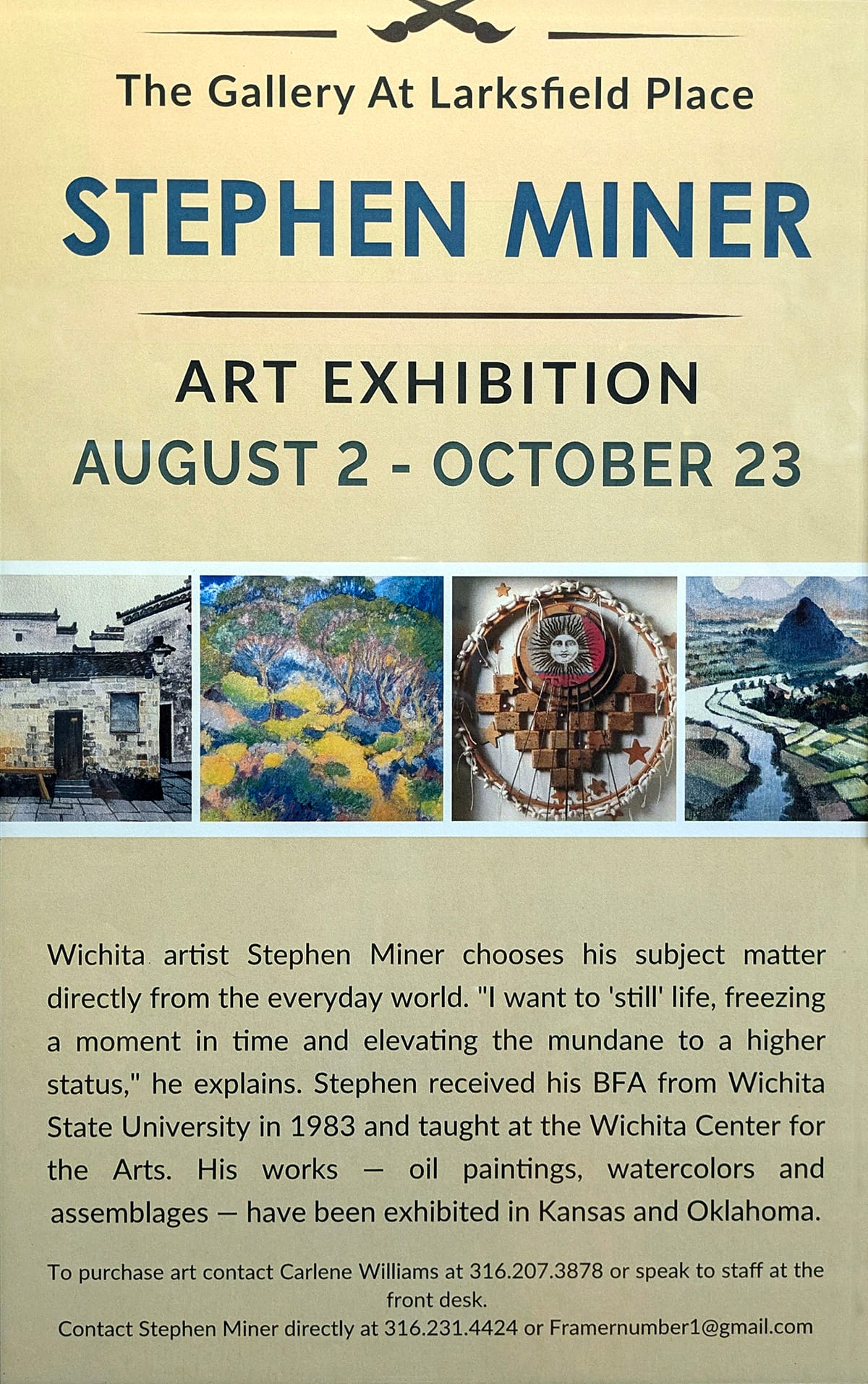
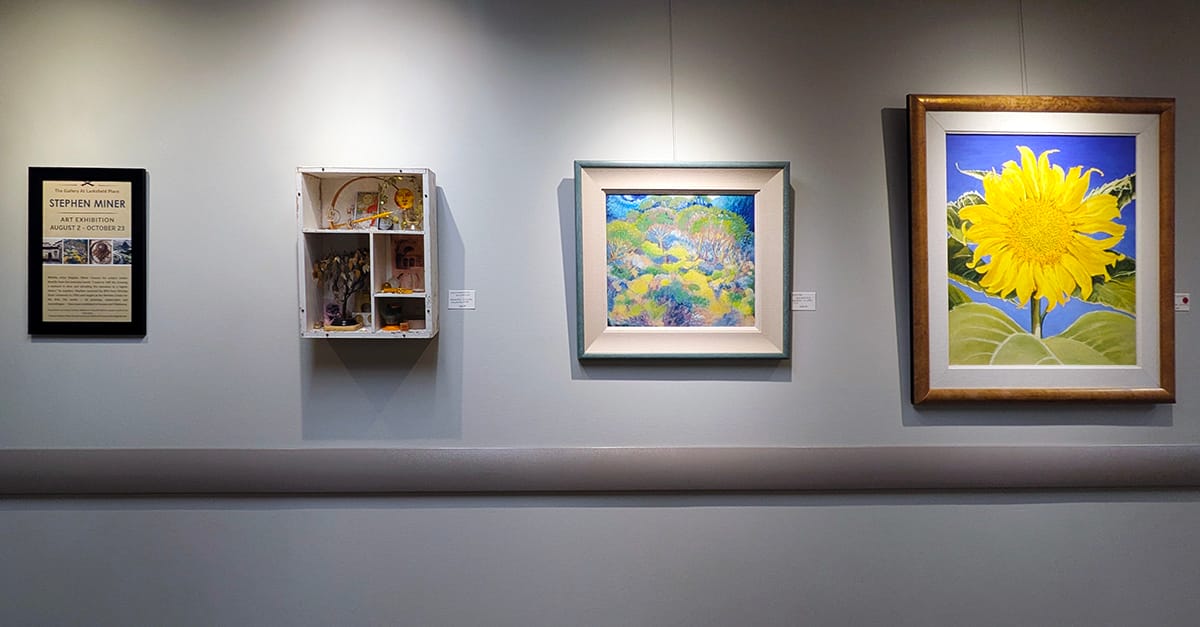
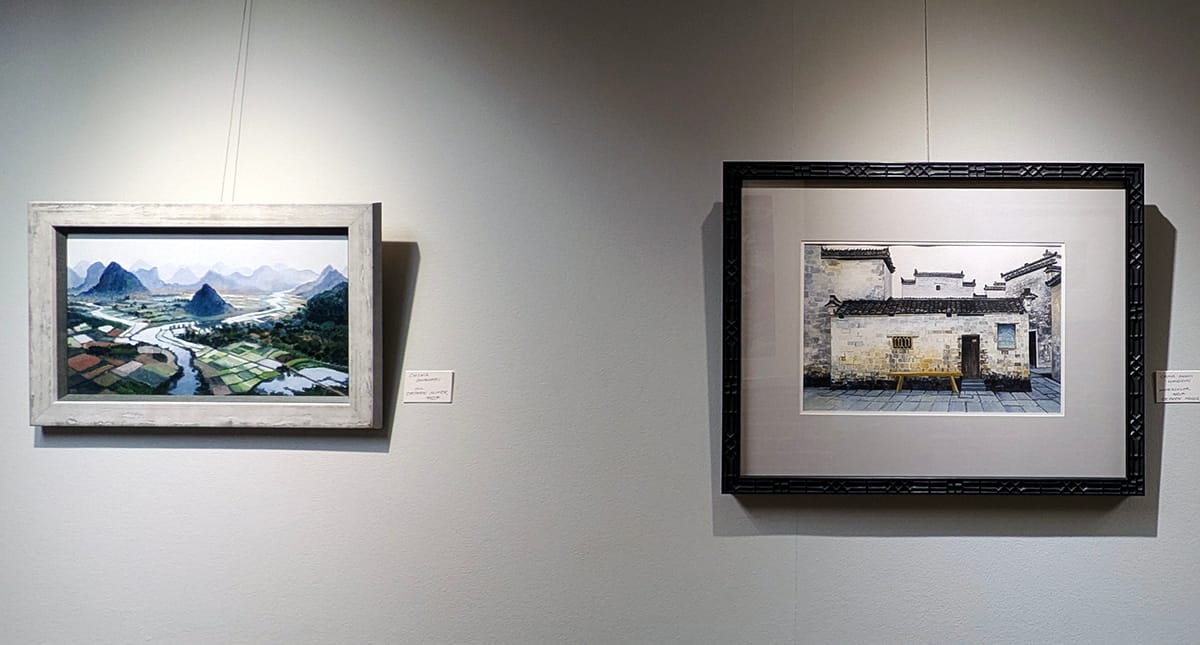
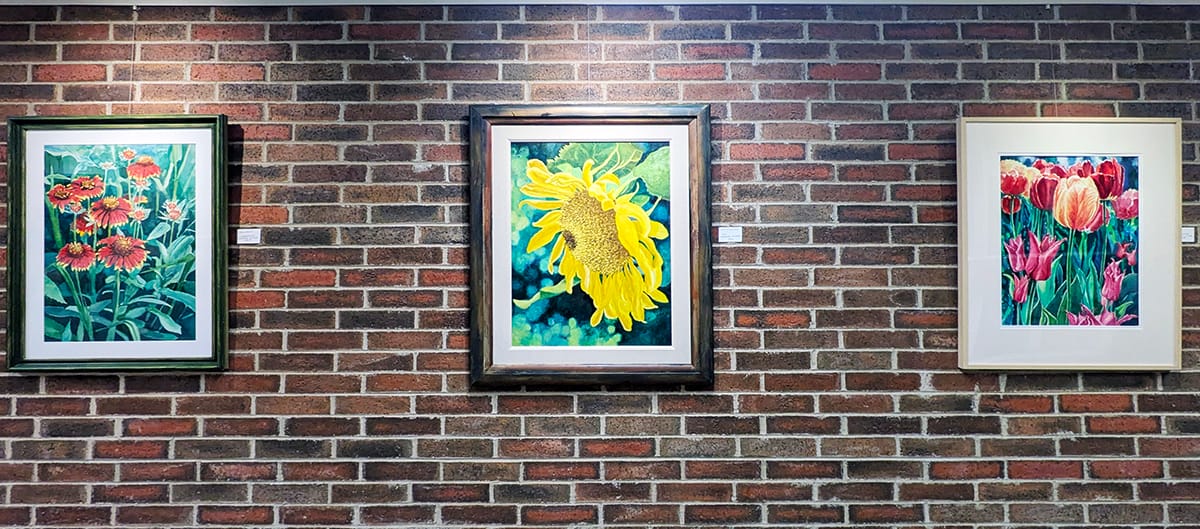
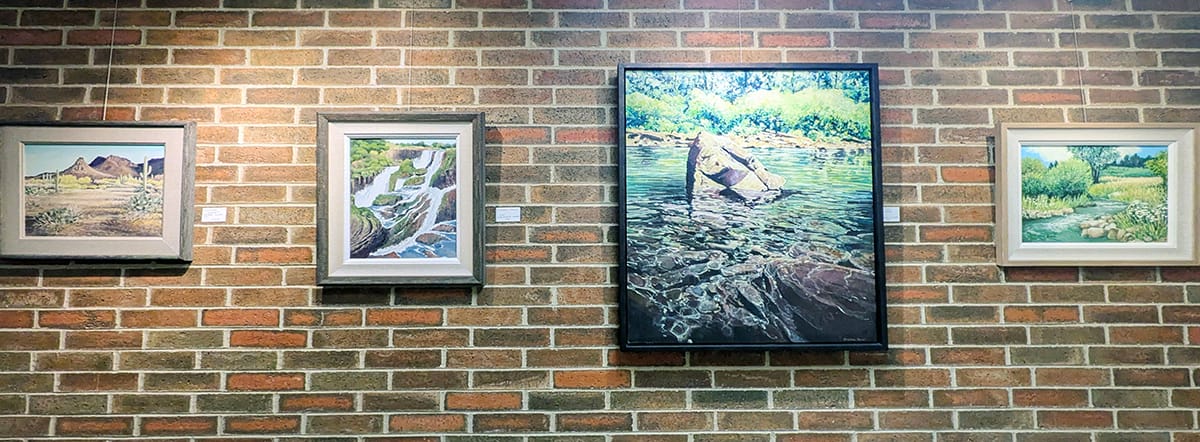
Installation views from Stephen Miner's exhibition at Larksfield Place. Photos by Jessy Clonts Day for The SHOUT.
The Details
An exhibition of works by Stephen Miner
August 2-October 22, 2025, the Gallery at Larksfield Place, 7373 E. 29th St. N. in Wichita
A guest parking lot is located near the gallery area, and visitors may drop by from 9 a.m.-6 p.m. daily.
Admission is free, and you don't need to register or check in with staff to visit.
Jessy Clonts Day is a writer, roller skater, and mother. After living ten years in the American South and Southwest she and her spouse returned to Kansas to raise their family, where the sunsets are otherworldly and the arts community is alive and well.
❋ Derby man has the kind of voice that turns heads — and chairs
❋ Socializing while sober: how some Wichitans are cultivating alcohol-free communities
❋ As a small creative business closes, the owner mourns
❋ Painting through it: Autumn Noire on 20 years of making art
❋ How a guy from Wichita resurrected 'Dawn of the Dead'
❋ Bygone Friends University museum housed curious collections
Support Kansas arts writing
The SHOUT is a Wichita-based independent newsroom focused on artists living and working in Kansas. We're partly supported by the generosity of our readers, and every dollar we receive goes directly into the pocket of a contributing writer, editor, or photographer. Click here to support our work with a tax-deductible donation.




